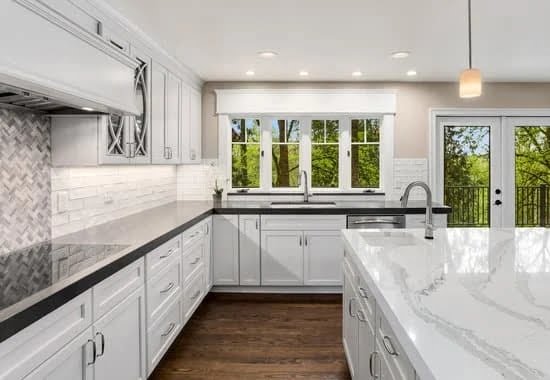Home renovations are an exciting yet challenging endeavor, as homeowners strive to create a space that reflects their personal style and enhances the value of their property. One often overlooked aspect of home renovations is the role of color, which has a profound impact on the overall aesthetic and ambiance of any space. In order to make informed design choices, many homeowners turn to color consultations for expert guidance.
But is a color consultation considered a capital improvement? In this article, we will delve into the importance of color in home renovations, define what a color consultation entails, explore its legal and financial aspects, and debunk common misconceptions surrounding this valuable service.
Understanding the power of color is crucial when embarking on home renovations. Colors can evoke specific emotions and set the tone for different spaces within your home. They have the ability to create an atmosphere that promotes relaxation in bedrooms or productivity in home offices. Therefore, selecting the right colors is not just about aesthetics; it is about creating an environment that aligns with your lifestyle and enhances your well-being.
A color consultation plays a vital role in helping homeowners make informed decisions about paint colors, finishes, and overall color schemes throughout their homes. It involves engaging with a professional known as a color consultant who possesses expert knowledge of current design trends, psychological effects of colors, lighting considerations, and various other factors that influence how colors interact within a space.
By collaborating with a skilled color consultant, homeowners can reap numerous benefits such as saving time and money by avoiding costly mistakes, ensuring harmonious color combinations throughout their homes, and achieving their desired aesthetic vision.
With an understanding of why color consultations are essential in home renovations, many homeowners wonder if they can be classified as capital improvements. The answer lies in considering both legal and financial aspects. Legal considerations involve determining whether painting or changing colors falls under your local jurisdiction’s definition of capital improvements or maintenance activities.
Financial implications, on the other hand, pertain to understanding how a color consultation may impact your property’s value and potential tax benefits. In the following sections, we will explore these legal and financial aspects in more detail to provide clarity on whether a color consultation counts as a capital improvement.
What is a Color Consultation
A color consultation is a service provided by professionals to help homeowners choose the right colors for their home renovations. This section will define what a color consultation entails and explain its purpose in the context of home renovations.
A color consultation involves working with a trained expert who has a deep understanding of color theory, design principles, and current trends. The consultant will assess the homeowner’s needs, preferences, and the existing elements in the space to provide personalized recommendations on choosing the most appropriate colors for walls, furniture, accessories, and other design elements.
The purpose of a color consultation is to ensure that the colors chosen for a home renovation project create a harmonious and cohesive look that reflects the homeowner’s style and enhances the overall aesthetic appeal of their space. Color has a significant impact on our emotions, moods, and wellbeing, so choosing the right colors can help create an inviting and comfortable living environment.
During a color consultation, various factors are taken into consideration such as lighting conditions in the space, architectural features, existing furniture or artwork that needs to be incorporated into the design scheme, personal preferences of the homeowner, and any specific goals or desired atmosphere for each room. The consultant will consider all these elements to develop a well-thought-out color palette that achieves both aesthetic satisfaction and functionality goals.
| Consultation Process | Description |
|---|---|
| 1. Initial Assessment | The consultant visits your home to evaluate your space’s current condition. |
| 2. Discussion | You have an in-depth conversation about your vision for your home and any specific concerns or requirements you may have. |
| 3. Color Analysis | The consultant considers factors such as natural light, room size, existing furnishings, and personal preferences to create a customized color scheme for each space. |
Once the consultation is complete, you will receive a detailed report that includes the recommended colors for each room or area of your home renovation project. This report will serve as a guide when making decisions about paint colors and other design elements. With the help of a color consultation, you can feel confident that your home renovation project will result in a visually appealing and harmonious space that reflects your style and enhances your overall well-being.
The Role of a Color Consultant
A color consultant plays a crucial role in home renovations by providing expertise and guidance on color selection. While many homeowners may feel confident in choosing colors themselves, a color consultant brings a level of knowledge and professionalism that can greatly enhance the outcome of a renovation project.
One of the key benefits of working with a color consultant is their ability to create cohesive and harmonious color schemes. They have an understanding of color theory, including principles such as complementary colors, analogous colors, and the psychological effects of different hues.
By taking into consideration factors such as natural light, existing furnishings, and personal preferences, a color consultant can create a palette that not only looks visually pleasing but also suits the unique needs and style of the homeowner.
The expertise of a color consultant extends beyond simply selecting paint colors. They also have knowledge of various finishes, textures, and materials that can be used to further enhance the overall aesthetic of a space.
For example, they may recommend using different sheens or types of paints in different areas based on factors like durability or ease of cleaning. Additionally, they can suggest creative ways to incorporate color through accessories or accent walls to add visual interest and personality to a room.
| Expertise | Benefits |
|---|---|
| A deep understanding of color theory and its application | Creation of cohesive and harmonious color schemes |
| Knowledge about different finishes, textures, and materials | Enhancement of overall aesthetic through strategic use |
| Ability to consider natural light and existing furnishings | Presentation of personalized solutions tailored to homeowner’s preferences |
Working with a color consultant not only ensures that the visual aspects of a space are well thought out and aesthetically pleasing, but it can also have a positive impact on the homeowner’s well-being. Colors have the power to evoke emotions and influence moods, making it essential to choose them carefully during a renovation.
A color consultant can guide homeowners in selecting colors that promote relaxation in bedrooms, creativity in offices, or a welcoming atmosphere in common areas. This thoughtful approach to color selection can help create spaces that not only look great but also feel great to live in.
In terms of financial benefits, investing in a color consultation can provide long-term value for homeowners. A well-chosen color scheme can enhance the overall appeal and marketability of a property, potentially increasing its resale value.
Buyers often look for homes with visually appealing interiors, and having a professional’s touch in color selection demonstrates attention to detail and quality workmanship. Additionally, by avoiding costly mistakes such as choosing colors that don’t complement each other or clash with existing furnishings, homeowners can save money on paint and unnecessary renovations down the line.
Is a Color Consultation Considered a Capital Improvement
Understanding Capital Improvements
Before diving into whether a color consultation is considered a capital improvement, it is important to understand what exactly capital improvements are. In the realm of home renovations, capital improvements refer to permanent or long-lasting enhancements made to a property that increase its value or extend its useful life. These improvements typically involve significant costs and can be categorized as structural changes, additions, or improvements that result in a better living environment.
Examples of capital improvements include kitchen remodels, bathroom renovations, room additions, installing new flooring, and replacing windows or roofing. These types of projects require extensive planning and often involve skilled professionals like contractors or architects. The goal of capital improvements is not just to update the appearance of a property but also to enhance its functionality and overall value.
The Consideration of Color Consultations
Now that we have defined capital improvements, we can evaluate if a color consultation falls under this categorization. A color consultation involves hiring an expert who provides guidance and advice on selecting paint colors for various spaces in your home. While it may not seem like a significant undertaking compared to other renovation projects, the impact that color has on a space should not be underestimated.
However, from a legal and financial perspective, it is generally not considered a capital improvement. This is because color consultations do not involve permanent changes to the structure of the property nor do they typically have large associated costs. Instead, they serve as an additional service aimed at providing homeowners with professional assistance in choosing colors that best suit their style and preferences.
That being said, while it may not fall under the category of capital improvements, investing in a color consultation can still have many benefits when considering home renovations.
The Benefits of Investing in a Color Consultation
Although it might not carry the weighty financial implications of a major home renovation project, opting for a color consultation during your renovations can still be a wise investment. The expertise and guidance provided by a color consultant can help you make informed and thoughtful decisions about the colors you choose for your home.
A color consultation can save you time and money by preventing costly mistakes. The consultant will take into account various factors such as lighting, space, existing furniture, and your personal style to ensure that the chosen colors harmonize and complement each other effectively. They can suggest unique color schemes that create desired moods or enhance the overall atmosphere of your home.
Furthermore, investing in a color consultation can add value to your property in terms of enhancing its aesthetic appeal. Choosing the right colors can greatly improve the first impression of your home, both for yourself and potential buyers if you decide to sell in the future. By considering factors such as current design trends and market preferences, a color consultant can guide you towards colors that have broad appeal and may positively impact resale value.
Understanding Capital Improvements
When it comes to home renovations, it is important to understand the concept of capital improvements. Capital improvements are defined as any permanent structural or design changes made to a property that increase its value, prolong its useful life, or adapt it for new uses. These improvements are typically considered to be more substantial than simple repairs or maintenance.
Definition of Capital Improvements
A capital improvement can be broadly defined as any improvement that adds value to the property, enhances its functionality, or extends its lifespan. This can include major renovations such as adding a room, remodeling the kitchen or bathroom, replacing the roof or windows, installing new flooring, upgrading electrical systems, and more. Essentially, any change that significantly improves the quality or features of a property can be considered a capital improvement.
Examples of Capital Improvements
There are numerous examples of capital improvements that homeowners commonly undertake. One example is an addition to an existing structure that expands its living space. This could involve building an extra bedroom, expanding the kitchen area, or creating a new recreational area. Another common example is upgrading major systems within the home such as heating and cooling systems, plumbing systems, or electrical wiring.
Furthermore, aesthetic enhancements can also be considered capital improvements if they significantly enhance the value of the property. For example, replacing outdated wallpaper with fresh paint and modernizing fixtures and finishes throughout the house might also qualify as a capital improvement. The goal of these improvements is to not only improve the overall appeal and functionality of a home but also increase its market value.
Overall, understanding what constitutes a capital improvement is crucial when considering whether a color consultation for home renovations falls under this category. It is important to recognize that while color consultations may greatly enhance the visual appeal and market value of a home by providing expert advice on paint colors and schemes best suited for each space within the property, they may not necessarily fall into the category of capital improvements.
The distinction lies in the permanence, structural changes, and tangible enhancements that are typically associated with capital improvements.
Debunking the Myth
Color consultations for home renovations often come with several common misconceptions. These misunderstandings can lead individuals to underestimate the value and importance of seeking professional advice when it comes to choosing colors for their homes. In this section, we will debunk some of these myths surrounding color consultations, clarifying the truth behind them and highlighting the advantages of utilizing this service.
One common misconception is that color consultations are only necessary for those lacking a sense of style or creative flair. This couldn’t be further from the truth. While a color consultant can certainly help those who struggle with design decisions, their expertise extends far beyond simply picking out colors. They have a deep understanding of how different colors interact with one another and how they can impact a space’s atmosphere and functionality.
Another myth is that color consultations are unnecessary expenses that can easily be avoided. However, making an uninformed decision about colors can actually cost homeowners more in the long run.
If you end up dissatisfied with your chosen colors or find that they clash with your existing furnishings, you may need to invest additional time and money into correcting these mistakes. A color consultation, on the other hand, ensures that you make an informed choice from the beginning, saving you from potential regrets down the line.
Lastly, there is a misconception that color consultations only cater to extravagant or high-end renovation projects. While it’s true that some individuals seek professional assistance for large-scale renovations or luxury homes, color consultations are valuable for any type of project. Whether you’re renovating a single room or giving your entire home a makeover, a color consultation can guide you in creating a cohesive and visually pleasing space without breaking the bank.
To summarize, debunking these myths helps shed light on the true value of color consultations in home renovations. These services provide more than just assistance in selecting paint swatches; they offer expert guidance based on knowledge about how colors influence mood, functionality, and overall aesthetic appeal. By dispelling these misconceptions, individuals can make informed decisions about whether to seek a color consultation, knowing that it is a worthwhile investment for any home renovation project.
The Value of a Color Consultation in Home Renovations
A color consultation can greatly enhance the value of a home renovation project, both in terms of the property’s aesthetic appeal and its resale value. When it comes to creating a visually appealing living space, color selection plays a pivotal role. The right colors can transform a dull and outdated space into one that is vibrant, modern, and visually pleasing.
By investing in a color consultation, homeowners can receive expert guidance on choosing the perfect palette for their renovation project. A professional color consultant will take into consideration factors such as the architectural style of the home, natural lighting conditions, and existing furnishings. They will analyze all these elements to recommend colors that will not only create cohesion throughout the space but also showcase its unique features.
In addition to improving the aesthetics of a renovated home, a well-executed color scheme can also significantly increase its resale value. Potential buyers are often influenced by first impressions, and color has a profound impact on how people perceive spaces. A property with an expertly chosen color scheme can convey a sense of cohesiveness and attention to detail, making it more attractive to potential buyers.
Moreover, studies have shown that certain colors have psychological effects on individuals’ emotions and well-being. The right colors in different rooms can promote relaxation in bedrooms or encourage productivity in home offices. By incorporating these psychological principles into their recommendations, color consultants can help homeowners create spaces that positively impact their everyday living experience.
Ultimately, while some may consider a color consultation as an additional expense during home renovations, its value should not be underestimated. By enhancing both the visual appeal of the property and its potential resale value, a well-chosen color scheme can have long-lasting benefits for homeowners.
The Impact of Color on Everyday Living
One aspect of home renovations that is often overlooked is the impact of color on everyday living. While many people focus solely on the aesthetic appeal of colors, it is important to recognize that they have a profound effect on emotions and well-being as well.
Color can create a certain mood or atmosphere within a space, influencing how we feel and even how we behave. Therefore, when considering a color consultation for your home renovation, it is crucial to understand the potential impact it can have on your everyday life.
Colors have the power to evoke specific emotions and moods. Warm colors such as reds, oranges, and yellows are known for their energizing and stimulating effects. They can create an atmosphere of excitement and warmth, making them suitable for spaces where social interaction occurs, such as living rooms or dining areas.
On the other hand, cool colors like blues, greens, and purples tend to be calming and soothing. They promote relaxation and tranquility, making them ideal for bedrooms or spa-like bathrooms.
In addition to influencing our emotions, colors also play a crucial role in our overall well-being. Research has shown that exposure to certain colors can have physiological effects on our bodies. For example, studies have found that looking at the color green can reduce stress levels and increase feelings of calmness.
Similarly, shades of blue have been found to lower blood pressure and heart rate. By incorporating these colors into your home through a color consultation, you can create a more peaceful and health-promoting environment.
Overall, understanding the impact of color on everyday living is essential when considering a color consultation for your home renovation project. By choosing the right colors for each room based on their emotional and physiological effects, you can enhance not only the aesthetics but also the overall mood and well-being within your home.
Consult with a professional color consultant who understands these principles to ensure that you create a space that not only looks beautiful but also supports your emotional and physical well-being.
Making an Informed Decision
Before deciding to opt for a color consultation for your home renovation, there are several important factors to consider. Taking these factors into account will help you make an informed decision and ensure that the consultation will be beneficial for your specific needs and goals.
- Budget: It’s crucial to assess your budget before opting for a color consultation. Color consultations can range in price depending on the expertise of the consultant and the extent of the services provided. Consider how much you are willing to spend on this aspect of your renovation project.
- Personal Style and Preferences: Think about your personal style and preferences when it comes to colors. Are you someone who tends to gravitate towards bold and vibrant hues, or do you prefer more neutral and calming tones? A color consultation can help guide you in choosing colors that align with your personal taste while also considering current design trends.
- Long-Term Goals: Consider your long-term goals for your home. Are you planning on selling it in the near future, or do you intend to stay in it for many years to come? If resale value is important to you, a color consultation can assist in selecting colors that appeal to potential buyers and increase the overall value of your property.
- Existing Design Elements: Take stock of any existing design elements in your space that will remain after the renovation. This includes flooring, furniture, artwork, or fixtures that contribute to the overall aesthetic of the room. A color consultant can help harmonize these existing elements with new colors introduced during the renovation process.
- Natural Lighting: Assess the natural lighting conditions in each room undergoing renovation. Natural light can greatly impact how colors appear within a space. By understanding how light affects different areas at various times of day, a color consultant can recommend shades that look their best under specific lighting conditions.
By considering these factors before opting for a color consultation, you can ensure that this service will be valuable in achieving your desired outcome. Taking the time to make an informed decision will contribute to the success of your home renovation project and help you create a space that is both visually appealing and aligned with your personal style and preferences.
Conclusion
In conclusion, color consultations play a vital role in home renovations. They provide homeowners with expert guidance and help them make informed decisions about color choices that can greatly enhance the overall aesthetic appeal of their property. While some may question whether a color consultation is considered a capital improvement, it is clear that the legal and financial aspects should be carefully examined before making any conclusions.
It is important to understand the definition of capital improvements and how they can impact taxation and the financial value of a property. While color consultations may not be considered traditional capital improvements, they can still contribute to the overall value of a home by enhancing its visual appeal and making it more appealing to potential buyers in resale situations.
Furthermore, color has a significant impact on everyday living and well-being. The right colors can create a calming atmosphere or encourage productivity in certain areas of the home. By connecting emotions with colors, homeowners can create spaces that promote relaxation, creativity, or focus depending on their needs.
Before opting for a color consultation, homeowners should consider factors such as their budget, personal preferences, and long-term goals for their property. It is also important to choose a reputable and experienced color consultant who understands individual needs and can provide tailored recommendations.
Overall, color consultations bring immense value to home renovations by helping homeowners make informed decisions about color schemes that enhance both appearance and emotional well-being. When used effectively, colors have the power to transform spaces into personalized havens that reflect individuality while increasing the marketability of the property.
Frequently Asked Questions
Is a paint job a capital improvement?
A paint job can be considered a capital improvement depending on the circumstances. Generally, a capital improvement is an investment made to enhance the value or extend the useful life of a property.
If a paint job involves significant improvements like repairing the walls, applying multiple coats, or using high-quality materials that significantly increase the durability and longevity of the paint, then it could be considered a capital improvement. However, if it is simply a routine repainting with regular materials and no major enhancements, it might not meet the criteria for a capital improvement.
Are renovations capital improvements?
Renovations can indeed be classified as capital improvements in many cases. Renovations typically involve making substantial changes or upgrading various aspects of a property’s structure or appearance to improve its overall condition, functionality, aesthetics, or value.
Examples of renovations that can be considered capital improvements include major structural alterations, adding new rooms or floors to a building, installing new fixtures and fittings throughout the property, upgrading electrical or plumbing systems to modern standards, etc. In general, any renovation that significantly enhances the property’s value or extends its useful life would likely qualify as a capital improvement.
What are not examples of capital improvements?
There are several examples of improvements that do not fall under the category of capital improvements. These generally include routine maintenance tasks and repairs necessary to keep a property in good working order but do not add substantial value or extend its useful life significantly. Regular maintenance activities like repainting with standard materials without any significant enhancements may not qualify as capital improvements.
Other examples that typically do not meet the criteria include replacing light bulbs or simple light fixtures, fixing minor leaks or broken tiles without renovating the entire area affected, repairing small cracks in walls or floors that do not compromise structural stability, etc. Such maintenance tasks are essential but usually considered separate from larger-scale investments aimed at improving long-term value and functionality.

I’m thrilled to have you here as a part of the Remodeling Top community. This is where my journey as an architect and remodeling enthusiast intersects with your passion for transforming houses into dream homes.





